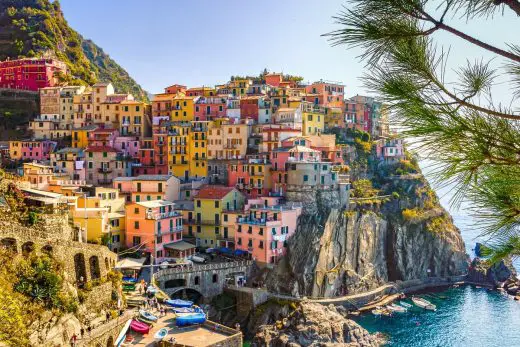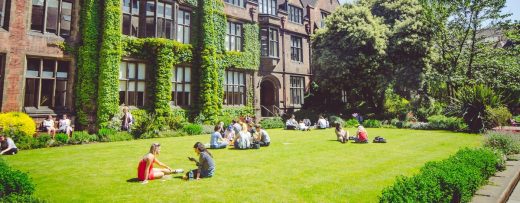Role of sustainability in modern architecture, Nearly zero-energy buildings, Sustainability, Green design projects
Role of Sustainability in Modern Architecture
7 July 2023
The Role of Sustainability in Modern Architecture – Exploring Innovative Sustainable Design Practices and Their Impact on the Built Environment
As a result of the world’s increasing preoccupation with environmental issues and the pressing requirement for a more environmentally responsible future, sustainability has emerged as a central concern in contemporary architectural design. The task of designing and constructing structures that not only fulfill the users’ requirements in terms of functionality and aesthetics but also reduce the buildings’ negative effects on the surrounding environment has been taken on by architects and designers. In this article, we will delve into the role that sustainability plays in contemporary architecture by investigating forward-thinking design approaches that emphasize eco-consciousness and analyzing the tremendous impact that these practices have on the built environment.
Designing with Nature: Biophilic Architecture
The use of biophilic architecture is an essential component of sustainable design and should be incorporated wherever possible. The goal of biophilic design is to reestablish a connection between people and the natural world by incorporating aspects of the natural world into the design of constructed environments. This can include the implementation of measures such as the strategic use of natural light, the addition of indoor plants, and the construction of green spaces. Not only does the promotion of a connection with nature through biophilic design improve the well-being of building occupants, but it also lowers a building’s overall energy consumption and makes it more environmentally sustainable.
Sasha Quail, Business Development Manager of claims.co.uk
Net-Zero Energy Buildings: Embracing Efficiency and Renewable Energy
The use of net-zero energy buildings, also known as NZEBs, is at the forefront of environmentally responsible architectural design techniques. These structures are intended to produce the same amount of energy as they use, typically achieved through a combination of design choices that are more energy-efficient than others and renewable energy sources such as solar panels or wind turbines. NZEBs cut their greenhouse gas emissions by a large amount and contribute to a more sustainable future by reducing their overall energy use as much as possible and relying on renewable energy sources.
Timothy Allen, Director at Oberheiden P.C.
Sustainable Materials: Reducing Environmental Impact
When it comes to environmental friendliness, the selection of building materials is of the utmost importance. Construction projects are increasingly making use of environmentally friendly resources, such as recycled or recovered materials, responsibly sourced timber, and alternatives with a lower environmental impact. In addition, sustainable alternatives are starting to emerge in the form of cutting-edge materials that have eco-friendly features, such as solar glazing or bio-based composites. Architects can mitigate the negative effects of construction on the environment, encourage the conservation of resources, and make a contribution to the development of a circular economy if they choose to work with sustainable materials.
Mike Lees, Chief Marketing Officer at LeaseAccelerator
Passive Design Strategies: Harnessing Natural Resources
Strategies for passive design have as their primary objectives the maximization of the use of natural resources and the reduction of dependency on mechanical systems. These tactics include optimizing the orientation of the structure, including efficient insulation, and making use of natural ventilation and daylighting. Buildings can reduce their need for energy by harnessing the power of nature, which can also help create more comfortable surroundings inside the building. Not only do solutions for passive design increase energy efficiency, but they also improve the comfort and well-being of building occupants.
Mathew Bowley, Head of Marketing at Solmar Villas
Regenerative Design: Restoring and Enhancing Ecosystems
In addition to sustainable methods, regenerative design takes a comprehensive approach to architecture to restore and improve ecosystems that have been negatively impacted by human activities. This strategy entails the incorporation of elements such as green roofs, rainwater harvesting systems, and permeable surfaces, all of which help to foster biodiversity, preserve water, and reduce the impact of the urban heat island effect. The practice of regenerative design makes a direct contribution to the process of restoring ecosystems and encourages the development of a mutually beneficial partnership between the built environment and the natural world.
Tiffany Payne, Marketing Manager at iFlooded Restoration
Role of sustainability in modern architecture Conclusion
In today’s modern architecture, sustainability is no more a desirable but optional concern; rather, it is a responsibility that architects and designers are obligated to accept. Architects can design buildings that actively contribute to a more sustainable future by utilizing cutting-edge sustainable design approaches to develop structures that go above and beyond meeting practical needs.
The incorporation of biophilic architecture, the adoption of net-zero energy design, the utilization of sustainable materials, the implementation of passive design strategies, and the adoption of regenerative principles are some of how we can shape a built environment that reduces its impact on the planet and provides spaces that are healthier and more sustainable for future generations.
Biophilic architecture is an architectural style that takes inspiration from natural environments and incorporates elements of living organisms. The incorporation of environmentally friendly practices into building design is not merely a fad; rather, it is an essential move toward achieving a balance that is more agreeable between man-made buildings and the natural world.
Comments on this guide to the Role of sustainability in modern architecture article are welcome.
Eco Architecture
Contemporary Green Architecture Design
FCA proposed new rules to tackle greenwashing
Sustainable Timber Architecture
Low Carbon Building Standards Strategy for Scotland : Sullivan Report
Buildings / photos for the Role of sustainability in modern architecture page welcome








